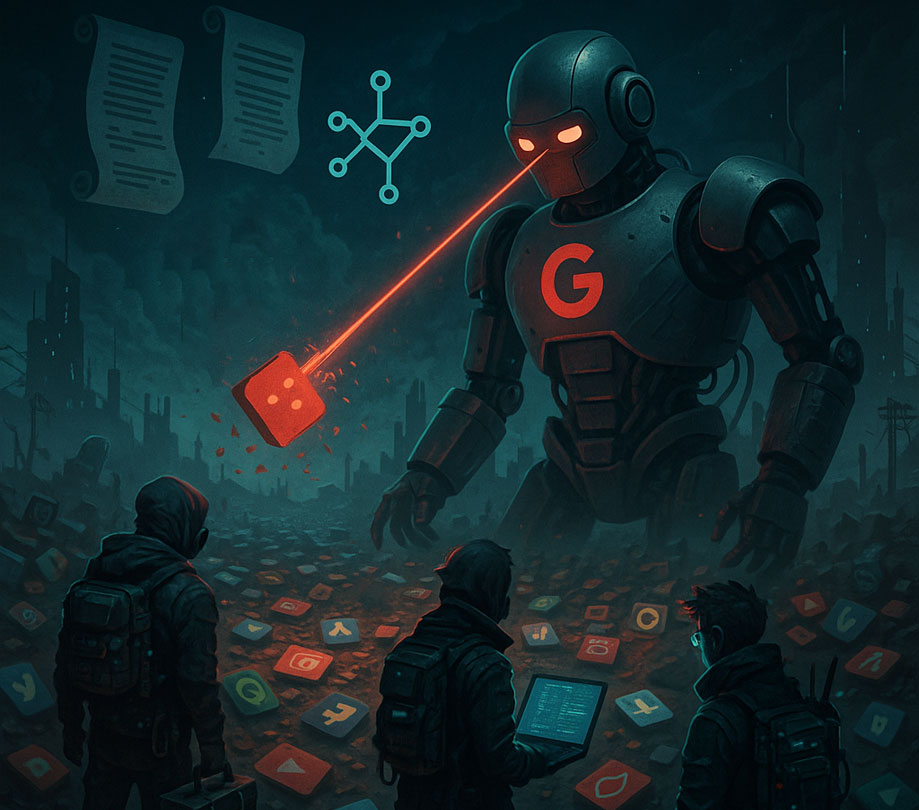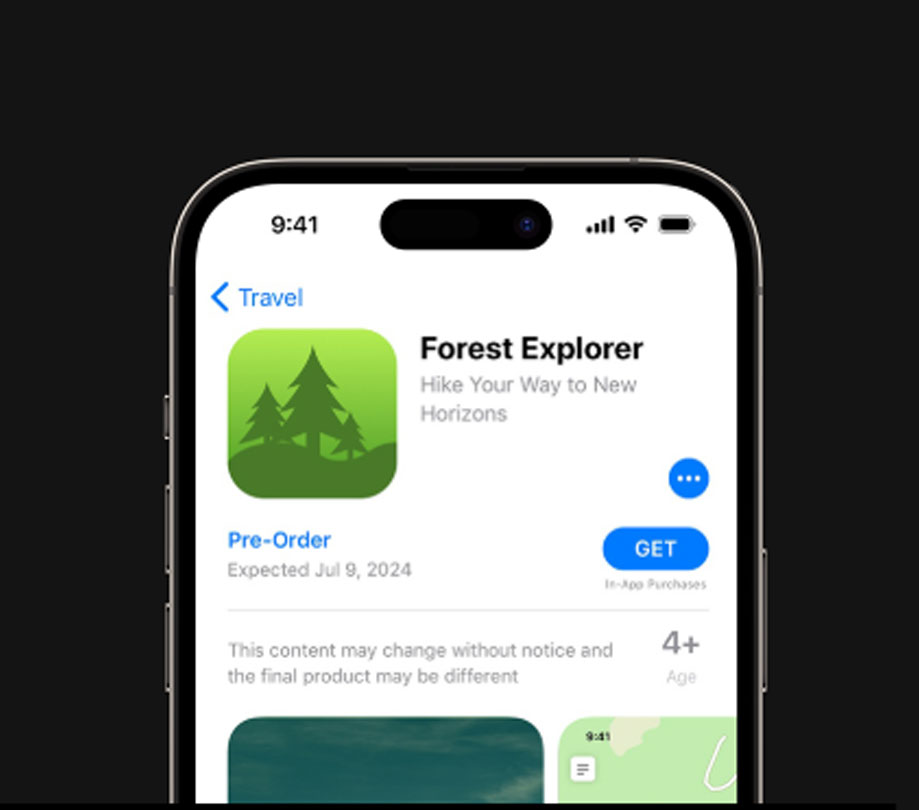Enterprise
Wayfair CTO on experimentation at scale
Tuesday, August 28, 2018

|
John Mulliken |

A glimpse into the process that led Wayfair's in-house team of nearly 1,900 engineers and data scientists to build next-gen app experiences.
Fans of street art will recognize the work of Shepard Fairey, the artist whose depiction of Andre the Giant made waves in 1989. His most iconic work is his portrayal of Barack Obama as “Hope,” which dominated the 2008 U.S. presidential campaign and propelled his artistic endeavors into mainstream scrutiny.
Fairey was an early believer in the power of scale. He understood how it impacted the conversation, whatever the focus. “Andre the Giant Has a Posse” started out as a sticker campaign, and as the image gained recognition, his depiction of Andre the Giant grew…literally. In 1990, during Buddy Cianci’s second pass at becoming the mayor of Providence, Rhode Island, Fairey “defaced” a massive billboard and covered Cianci’s face with Andre’s, imposing his artwork en masse. Cianci went on to win the campaign, perhaps with the aid of Fairey’s stunt.
The lesson here is clear; Consequences are quick to arise if your management of scale goes unchecked. Good engineering is predisposed to learning from its missteps, which is why companies that embrace experimentation tend to thrive and iterate quickly in a fast-paced business ecosystem.
A culture of change, agility, and humility
The process of shipping a sofa across the United States is a deliciously brutal and surprisingly nuanced operation. When it comes to delivery, you’ll want to ensure that every complex and technically sophisticated mechanism is seamless, frictionless and just works. Is this a possibility when it comes to shipping large packages or developing software? I think so.
Looking look at these hard problems, there are elements in the discovery and delivery channels for Wayfair that benefit from a certain degree of humility -- millions of visually distinct items but few recognized brands, multiple carriers, multiple boxes and a vast multitude of spare parts. While today delivery is almost always straightforward, the set of things that can go wrong is enormous. Having a team that understands these intricacies is one piece of the puzzle. What groundwork should exist for the whole shebang to be operational? Try starting with ambition, agility and a healthy dose of engineering pride.
Red Hat is a great example of adapting to the needs of now and ensuring its mindset for change is established from the ground up. In an effort to empower and enable its employees to think and act in new, innovative ways, Red Hat president and CEO, Jim Whitehurst, documented the abolishment of the team’s planning, prescription, and execution model by bringing in an ethos concerned with configuration, enablement, and engagement. By focusing on experimentation, the seeds of motivation and handing the power of decision-making to those most impacted, Red Hat teams are crafting a culture of learning, collaboration and calibration that places team health in the spotlight and the customer at the center of their work.
Another organization with experimentation running through its veins is StitchFix, which fosters an environment that data scientists can be successful in. Curiosity, creativity, and impact are all major themes, which is certainly worth imitating if you’re hoping to keep your experimental tendencies blazing.
To an outsider, these motifs might not seem relevant to a technology team at first, but they’re at the crux of a huge amount of troubleshooting that goes into managing scale. Companies also need a dose of humility in the face of complexity: It takes real passion for thorny problems to come into work every day and grind out improvements that make for an unforgettable customer experience.
Consistent evolution
If companies can be at home with experimentation, then what are they experimenting with? The answer is potentially everything.
The emerging technologies that were deemed too cutting-edge some years ago, such as Kubernetes and Linux containers, were exactly where Red Hat chose to invest. It took a chance on platforms that are now at the top tier of every large-scale technology stack. While its penchant for experimenting found a home among the hybrid cloud platform (known as OpenShift), it is its hybrid approach to management that will shape the evolutionary shifts in their culture and managerial landscape. The Red Hat story is continuously being written.
Part of Wayfair’s engineering story reads a little like this: Continuous deployment at scale, automated testing for safety, modules for mobility and efficiency on point. One of Wayfair’s labs for experimentation, Wayfair Next, has taken tremendous strides down the path to efficiency when it comes to product imagery needs, leveraging the latest in augmented reality (AR) technology for the benefit of the business. We’ve now scaled up both efforts by introducing an award-winning AR feature in our mobile shopping experience and saving cost.
Knowing when to try something new isn’t always measurable, but entrepreneurs and business leaders would do well to subscribe to the Build-Measure-Learn philosophy. PayPal heard the call long ago when it began applying lean startup principles as a means to improve existing products. Bill Scott, current Head of Engineering at Venmo, chronicled the company's journey on “bringing design to life” by way of belief in core principles, improvisation, listening, and reflection. Companies of various sizes and trades have successfully applied these principles, including Queue-It, 2bar, and General Assembly, which are just a few of the many organizations equipping the engineers of the future with the most modern of mindsets.
As ambition and humility allow organizations to scale their experimental culture, they should aim to remain in a constant state of evolution. Don’t set up barriers against value - if an idea has merit, make the effort support it, all or nothing. How should merit by assessed? By hiring earnest go-getters who want to make an impact on the business, who have a great handle on gauging quality.
Who directs these exploratory efforts? We all do, and we’re never done. It should be accepted as an ownership culture, and we’re all driven by the common denominator of impactful experiences.
Onward at rapid speed
With an evolving business model, organizations must be quick to adapt as necessary. Size shouldn’t hinder nimbleness during growth; give yourself the room to adopt a certain startup-like prosperity. Will your culture change during this time? Definitely; The one constant you’ll want to commit to is experimentation.
Managing scale will mean that organizations will still experience a state of flux. They’ll be in the midst of hiring skilled people to espouse their vision and figuring out ways to meaningfully compliment their tech culture throughout the organization and beyond. And, of course, they’ll still be open to learning and exploration; of themselves, their greater tech communities and of their industries as they shift another gear.
This content is made possible by a guest author, or sponsor; it is not written by and does not necessarily reflect the views of App Developer Magazine's editorial staff.

Become a subscriber of App Developer Magazine for just $5.99 a month and take advantage of all these perks.
MEMBERS GET ACCESS TO
- - Exclusive content from leaders in the industry
- - Q&A articles from industry leaders
- - Tips and tricks from the most successful developers weekly
- - Monthly issues, including all 90+ back-issues since 2012
- - Event discounts and early-bird signups
- - Gain insight from top achievers in the app store
- - Learn what tools to use, what SDK's to use, and more
Subscribe here












Comments